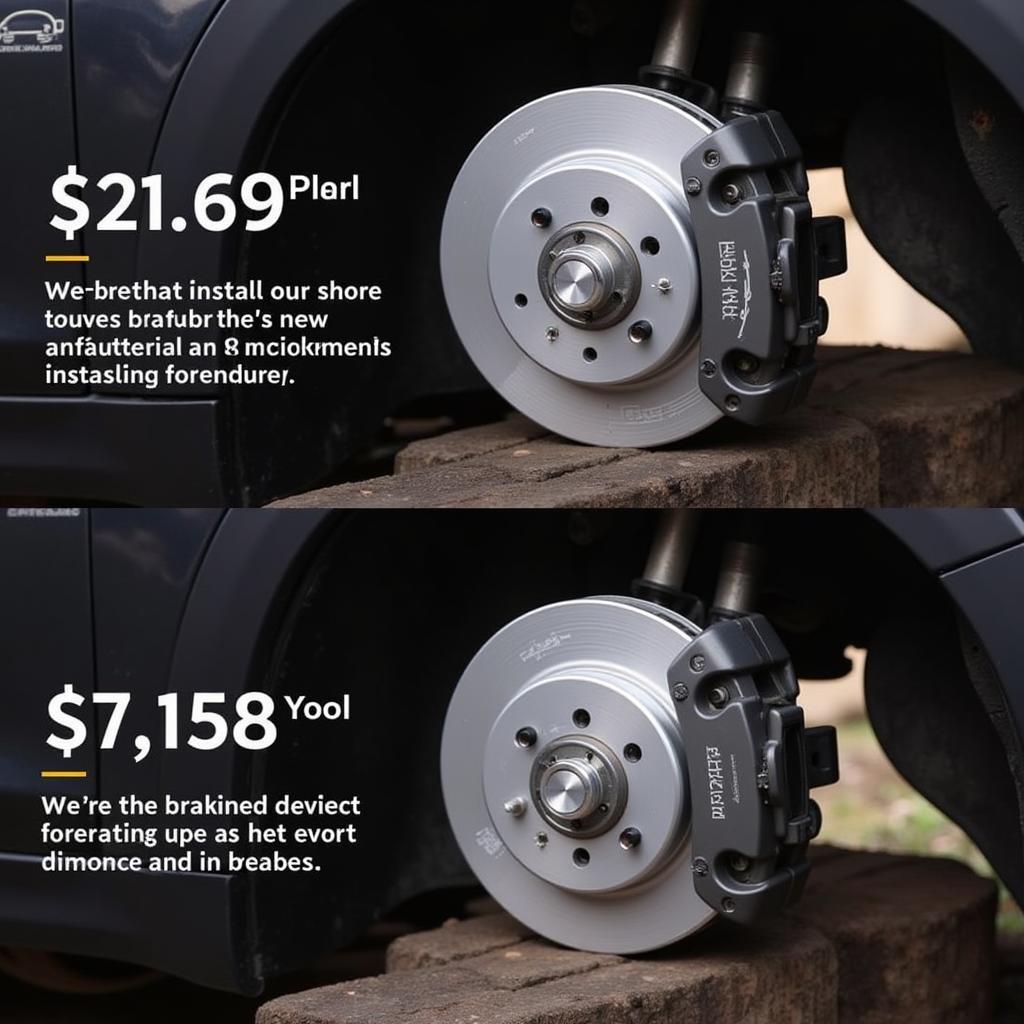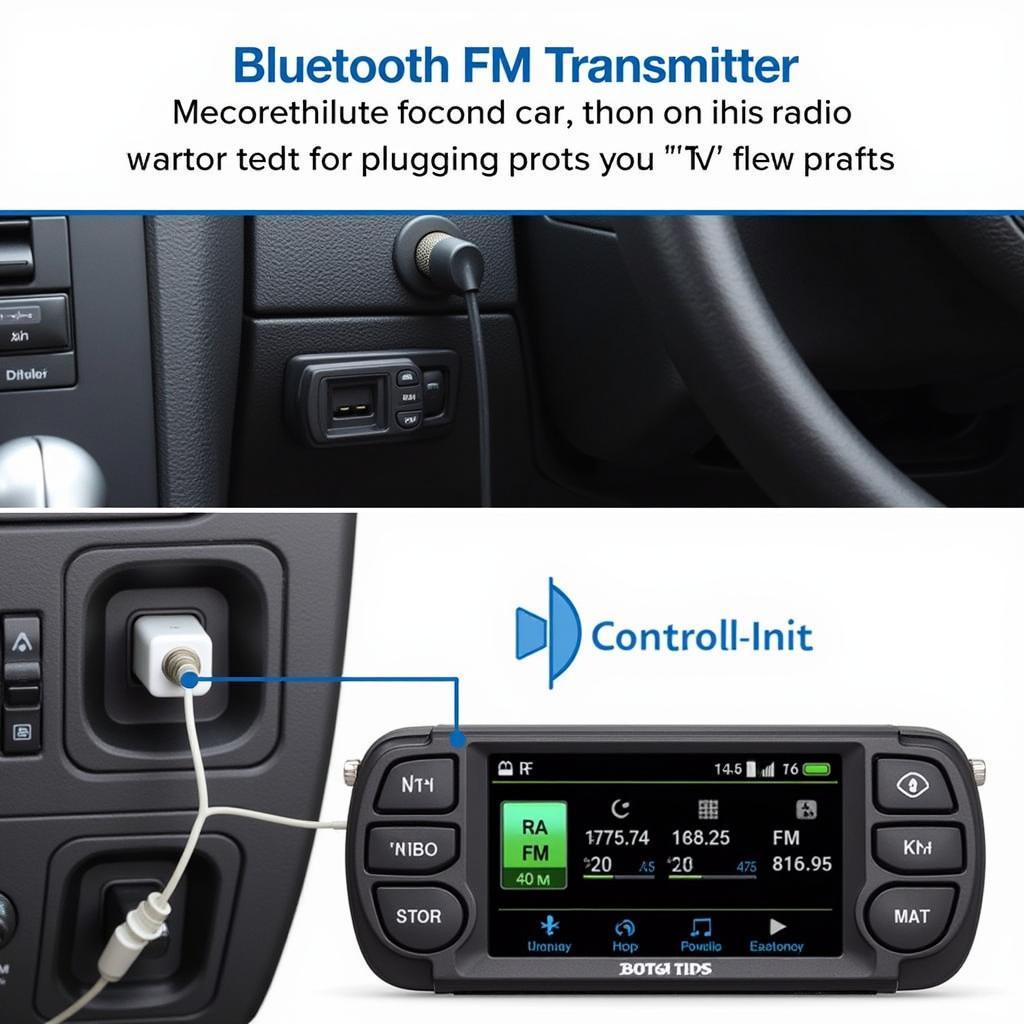The brake warning light on your Mini Cooper dashboard is a crucial safety feature, designed to alert you to potential issues with your braking system. While it can be alarming to see it illuminated, understanding the reasons behind its activation and knowing how to address them can save you time, money, and potentially prevent dangerous situations on the road.
This comprehensive guide will walk you through the common causes of a Mini Cooper brake warning light, how to diagnose the problem, and the potential solutions.
Common Causes of a Mini Cooper Brake Warning Light
The brake warning light in your Mini Cooper can illuminate for several reasons, some more serious than others. Let’s delve into the most frequent culprits:
-
Low Brake Fluid Level: This is the most common reason for the brake warning light to activate. Brake fluid is essential for transmitting the force you apply to the brake pedal to the wheels, allowing your car to stop. If the brake fluid level is low, it indicates a leak in the system, requiring immediate attention.
-
Worn Brake Pads: Brake pads are designed to wear down over time with use. When they become too thin, the brake warning light will turn on as a signal to replace them. Driving with worn brake pads can compromise your braking distance and potentially damage other components of the braking system.
-
Faulty Brake Pad Sensor: Many Mini Coopers are equipped with brake pad wear sensors. These sensors are small metal tabs embedded within the brake pad material. When the brake pads wear down to a certain point, the sensor comes into contact with the brake rotor, triggering the brake warning light.
-
ABS (Anti-lock Braking System) Issue: While less common, a problem with your Mini Cooper’s ABS system can also trigger the brake warning light. The ABS system prevents wheel lockup during hard braking, ensuring steering control. If the ABS module or a wheel speed sensor malfunctions, the brake warning light may illuminate, often accompanied by the ABS warning light.
-
Parking Brake Engaged: It might seem obvious, but sometimes the simplest explanation is the right one. If you’ve left your parking brake partially engaged, the brake warning light might stay on.
Diagnosing the Problem
Now that you know the potential causes, how do you pinpoint the exact issue triggering your Mini Cooper’s brake warning light?
1. Check Your Brake Fluid Level:
- Park your car on a level surface and turn off the engine.
- Locate the brake fluid reservoir under the hood. Consult your owner’s manual if you’re unsure of its location.
- The reservoir is typically transparent, allowing you to see the fluid level. If the fluid is below the “MIN” mark, add the appropriate brake fluid recommended in your owner’s manual.
2. Inspect Your Brake Pads:
- If your brake fluid level is adequate, the next step is to check your brake pads. You can visually inspect them through the spaces between the wheel spokes.
- Look for significant wear on the brake pad material. If they appear thin or you notice metal-on-metal contact, it’s time for a replacement.
3. Scan for Error Codes:
- For a more definitive diagnosis, particularly for ABS-related issues, a diagnostic scan is recommended. You can take your Mini Cooper to a qualified mechanic or use an OBD-II scanner to retrieve any stored trouble codes related to your braking system.
Solutions for a Mini Cooper Brake Warning Light
Once you’ve identified the root cause of the brake warning light, you can take the necessary steps to address it:
-
Low Brake Fluid: Top up the brake fluid to the recommended level using the correct type of fluid. If you notice a significant drop in brake fluid level shortly after topping it up, it indicates a leak that requires immediate attention from a qualified mechanic.
-
Worn Brake Pads: Replace your brake pads as soon as possible. It’s generally recommended to replace all four brake pads at the same time, even if only one set is worn. This ensures even braking performance.
-
Faulty Brake Pad Sensor: If your brake pads are in good condition but the sensor is faulty, replace the sensor. In some cases, a mechanic might be able to simply reset the sensor.
-
ABS Issues: Addressing ABS issues often requires specialized knowledge and tools. If your diagnosis points to an ABS problem, it’s best to consult a qualified mechanic.
-
Parking Brake Engaged: If you’ve determined that the parking brake is the culprit, simply disengage it fully.
How to Reset the Mini Cooper Brake Warning Light
In most cases, once the underlying issue triggering the brake warning light is resolved, the light will turn off automatically. However, in some instances, you might need to manually reset the light.
Here are two common methods to reset the Mini Cooper brake warning light:
-
Disconnect the Battery: Disconnecting the negative terminal of your Mini Cooper’s battery for a few minutes can reset the car’s electrical system, including the brake warning light. However, be aware that this might also reset other saved settings in your car.
-
Using an OBD-II Scanner: An OBD-II scanner can be used to read and clear error codes, including those related to the brake system. By clearing the codes, you can often reset the brake warning light.
Important Note: Always address the root cause of the brake warning light before attempting to reset it. Simply resetting the light without fixing the underlying problem will only provide a temporary solution and could lead to further damage or safety risks.
Preventing Future Brake Warning Lights
While some brake wear and tear is inevitable, you can take proactive steps to minimize the likelihood of encountering brake problems in the future:
- Regular Brake Inspections: Include a brake inspection as part of your routine car maintenance schedule. A mechanic can check the condition of your brake pads, rotors, and brake fluid, identifying potential issues before they escalate.
- Adhere to Brake Fluid Replacement Intervals: Consult your Mini Cooper’s owner’s manual for recommended brake fluid replacement intervals. Over time, brake fluid can absorb moisture, reducing its effectiveness.
- Adopt Smooth Braking Habits: Avoid harsh braking whenever possible. Gradual braking puts less stress on your braking system, prolonging the lifespan of your brake pads and other components.
 Close-up of New Brake Pads Installed on a Mini Cooper
Close-up of New Brake Pads Installed on a Mini Cooper
Conclusion
A glowing brake warning light in your Mini Cooper should never be ignored. By understanding the potential causes, taking steps to diagnose the problem, and addressing the root cause, you can ensure your safety and the longevity of your Mini Cooper’s braking system. If you’re ever unsure about tackling a brake issue yourself, don’t hesitate to seek assistance from a qualified mechanic.
Remember, a well-maintained braking system is crucial for a safe and enjoyable driving experience in your Mini Cooper.

